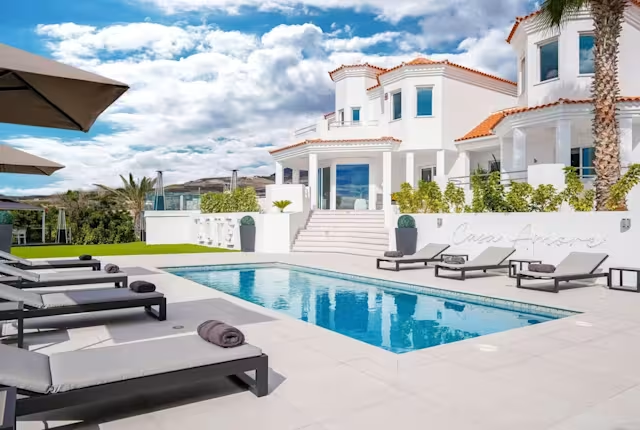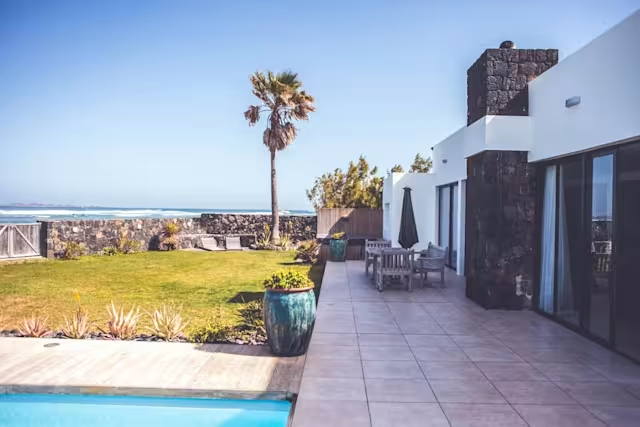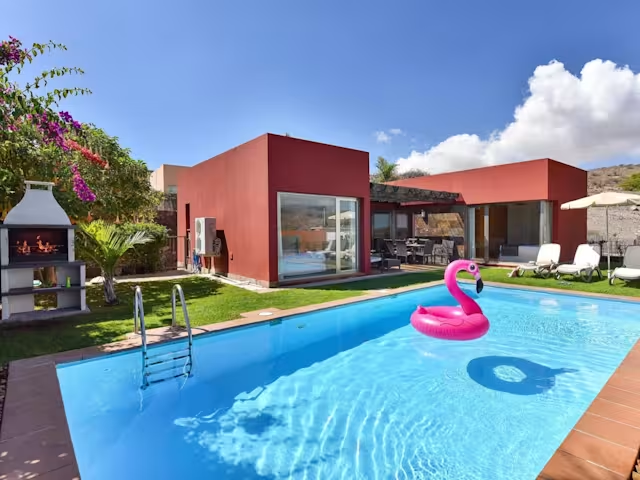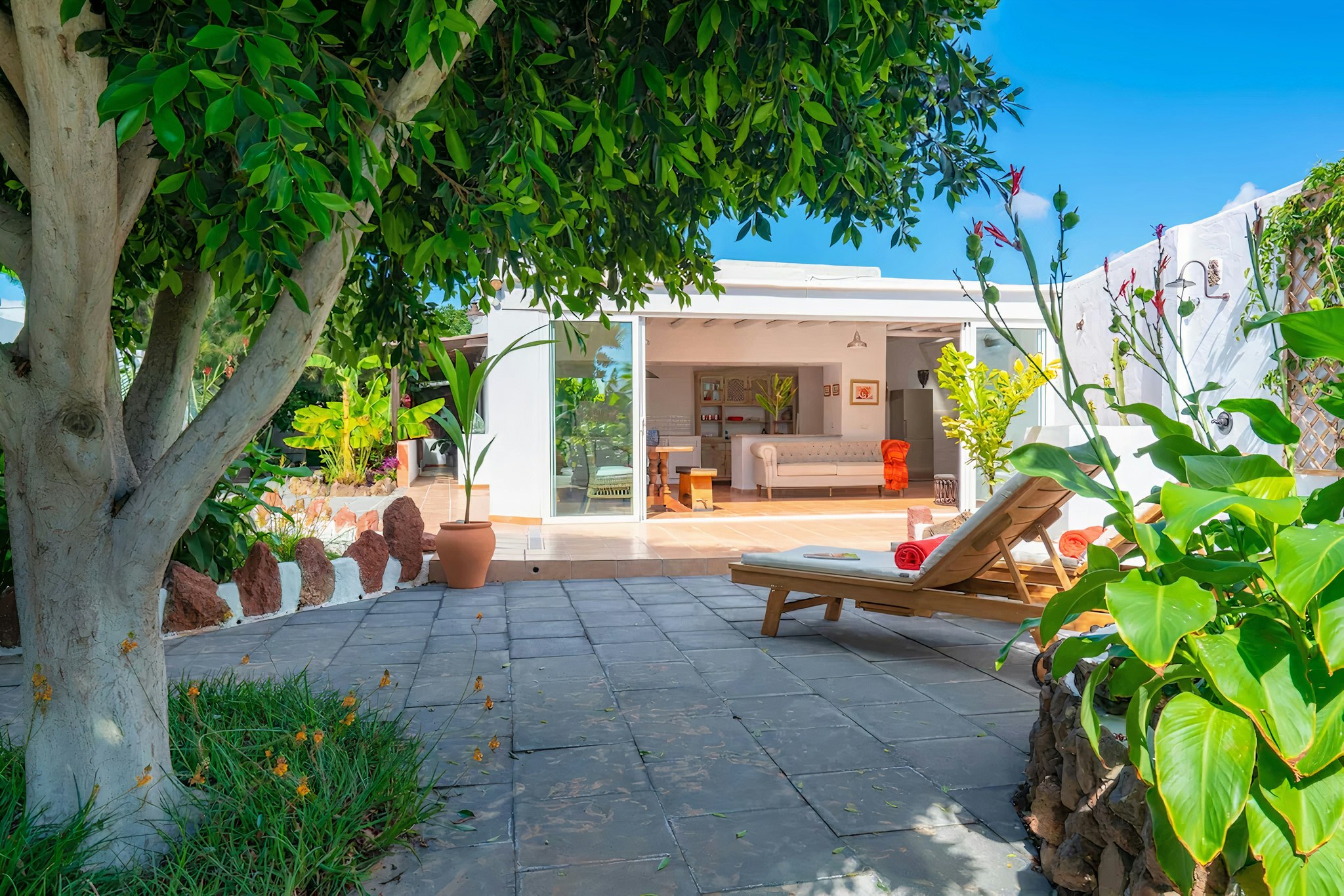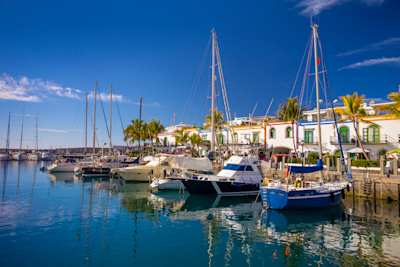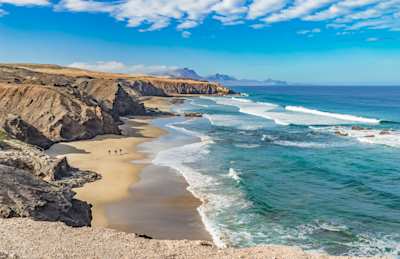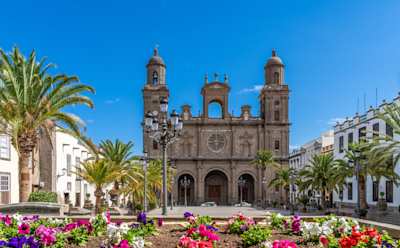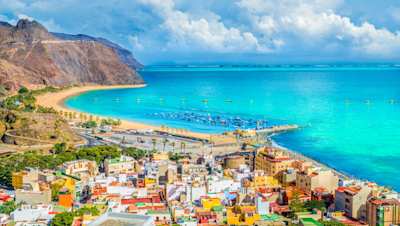Where To Stay in the Canary Islands: The World’s Prettiest Archipelago
Seven special islands, all unique and pristine in their beauty. The choice can be overwhelming, but we’re here to help you figure it out
~
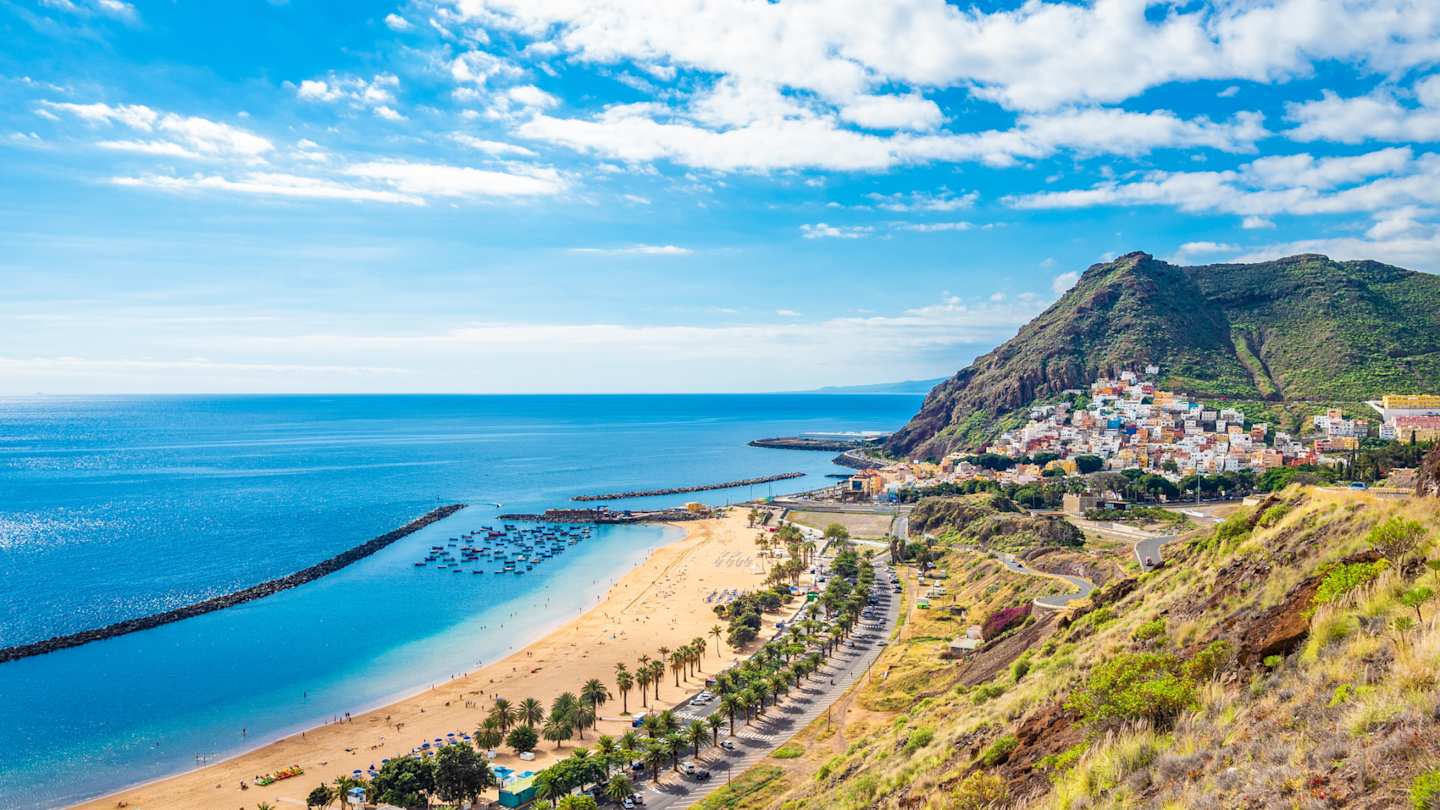
Located off the northwest coast of Africa, the Canary Islands have rightly been a beloved holiday destination for decades. One of the most popular archipelagos in the world, the Spanish-owned islands have earned their stellar reputation through their stunning beaches, mild year-round climate, volcanic landscapes and unique flora and fauna. Whether you’re there to soak it all up on a sun lounger, hike across the mountains, go whale watching or eat your way through the local cuisine, they're a no-brainer of a holiday. The only question is, where's the best place to stay in the Canary Islands?
With seven main islands to choose from (that’s Tenerife, Fuerteventura, Gran Canaria, Lanzarote, La Palma, La Gomera and El Hierro), the options can be a little overwhelming. But fear not. That’s where the Plum Guide travel experts step in to lend a helping hand. Below, we’re giving you the rundown on each location so you can figure out exactly where to stay in the Canary Islands to suit your needs.
Tenerife
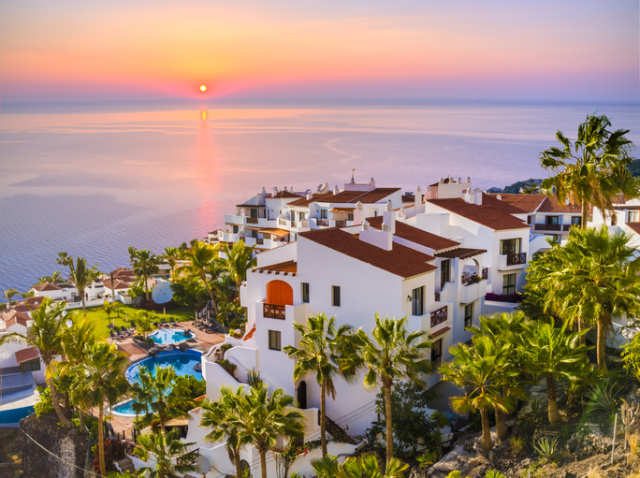
Sunrise over the ocean and white-washed houses in Puerto de Santiago, Tenerife
When it comes to where to stay in the Canary Islands, you simply can’t miss Tenerife. It’s the largest, most well-known of the Canaries and one of the most popular tourist destinations in the world. This means you can expect world-class tourist infrastructure alongside its natural beauty and diverse range of activities.
One of the most popular tourist attractions is the Teide National Park. It’s home to Mount Teide, which at 3,715 metres is Spain’s highest mountain and a UNESCO World Heritage Site. Another UNESCO World Heritage Site (as you’ll soon learn, they have plenty out here) is the historic city of San Cristóbal de La Laguna, often considered the cultural capital of the Canary Islands. It’s chock-full of dazzling architecture to discover.
Throughout Tenerife, you can also enjoy a variety of outdoor activities like hiking, cycling, surfing and whale watching (depending on the time of year). Naturally, there are plenty of resorts and world-class bays to discover, including Playa de las Teresitas and Playa del Duque – perfect for when you just feel like doing nothing.
Costa Adeje is close to some of the loveliest beaches and hosts some of the most popular, upmarket areas in Tenerife. Alternatively, Playa de las Américas has a lively atmosphere (plenty of partying) while Los Cristianos is a more laid-back and family-friendly area with a pretty harbour, lovely stretches of sand and a good selection of restaurants and shops. As the island’s capital city, Santa Cruz de Tenerife offers a mix of historic landmarks, modern shopping centres and a bustling nightlife scene.
Fuerteventura
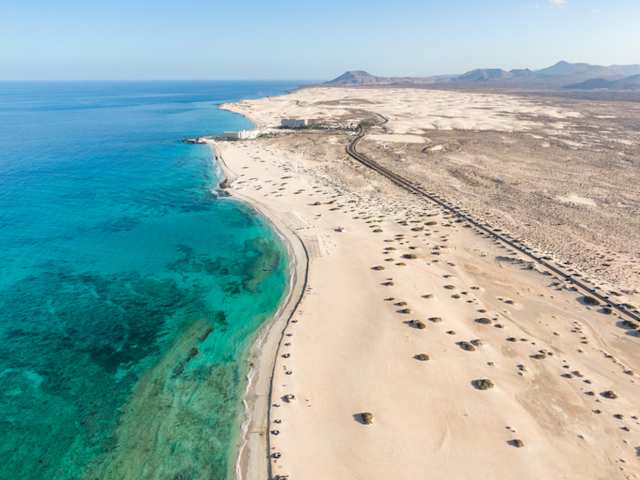
Drone view of Corralejo National Park (Parque Natural de Corralejo) with sand dunes and blue waters, Fuerteventura, Canary Islands
Fuerteventura is the second largest island in the Canaries and tends to have a more relaxed vibe. It’s a perfect destination for families and couples, home to some of Europe’s best beaches as well as plenty of activities and attractions to keep all ages entertained.
Must-visit beaches include Playa de Sotavento, which is famous for its annual windsurfing and kitesurfing championships (you don’t have to partake, don’t worry), Cofete Beach (located in a remote and unspoiled part of the island), and the 12-kilometre long Playa del Matorral with its calm, clean waters. Naturally, there’s plenty of sunbathing and swimming to be done for the relaxed types, while active busy-bodies can get stuck into hiking, cycling, watersports and birdwatching.
As well as the beach, there is also the Corralejo Natural Park and the Jandia Natural Park to explore the outdoors. Other must-visits include cultural and historical landmarks such as the Betancuria Museum of Archaeology and Ethnography or the Tostón lighthouse.
For where to stay, take a look at El Cotillo. This small fishing village on the island's west coast is perfect for those looking for a more chilled-out and authentic Fuerteventura experience. Elsewhere, Corralejo is by far the most popular resort town on the island, offering absolutely everything you need. Another great option is the resort town Caleta de Fuste, which has a marina, shopping centres and golf courses for both adults and little ones, proving a popular spot for families and couples.
Gran Canaria
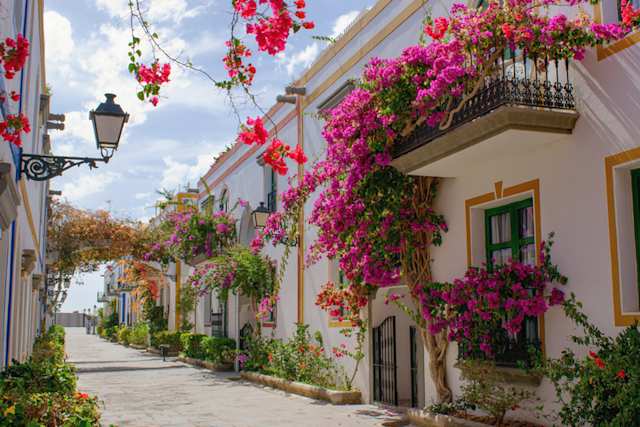
A street with white houses and colourful flowers, Gran Canaria, Spain
Next up, it’s Gran Canaria. This popular destination has a bit of everything (cliché, but true). It's the place to be for exciting outdoor activities. The must-do trips include the impressive Maspalomas Dunes, the volcanic Roque Nublo and the striking Barranco de Guayadeque, a huge ravine filled with a network of hiking trails and unique plants.
In terms of history and culture, be sure to check out the Vegueta neighbourhood, the Columbus Museum and the Alfredo Kraus Auditorium. If you can be persuaded to enjoy a little retail therapy, there’s a range of shopping options here, too. High-end designer boutiques sit alongside local markets and shops selling traditional Canarian crafts and souvenirs – tough choice.
For where to stay, you’ll have several options. Playa del Inglés is one of the largest and most popular resort areas in Gran Canaria, known for its impressive coastline, lively nightlife and wide range of restaurants and shops. Meanwhile, Las Palmas is the island’s capital city, located in the north. It’s the cultural hub of the island and best for those who want to be in the heart of the action. For something quieter and a little different, check out Puerto de Mogán, a charming fishing village located in the southwest of the island, known for its colourful buildings, quaint streets and scenic marina.
Lanzarote

Palm trees and beach loungers facing the sea, Puerto del Carmen, Canary Islands
Lanzarote has the nickname ‘fire island’ and it’s not hard to see why. Alongside its gorgeous beaches, it’s renowned for its unique volcanic landscapes – think volcanic craters and lava fields. Most visitors will head to Timanfaya National Park, home to the famous Montañas del Fuego (Fire Mountains). You can take a leisurely bus tour through the park or a slightly less leisurely hike along one of the many trails.
While on the topic of lava, it’s worth mentioning Jameos del Agua. This is a series of volcanic caves that have been turned into an arts and culture centre. Visitors can explore the caves and see the underground lake, as well as enjoy concerts and exhibitions held in the auditorium – it’s that cool that the lava solidified a long time ago. For some sun and sea, we recommend taking a ferry from Órzola to the small island of La Graciosa, which offers up some wonderfully pristine bays and turquoise waters.
Arrecife is the capital of Lanzarote, located on the east coast of the island and a great area to base yourself for fascinating history and culture. Meanwhile, Puerto del Carmen is one of the most popular tourist areas in Lanzarote, known for its lively atmosphere and long sandy beaches. It’s home to a vibrant nightlife, with plenty of bars and restaurants to choose from. For a more family-friendly location, head to Costa Teguise where you’ll find Aquapark and Costa Teguise Golf alongside gorgeous beaches.
La Palma
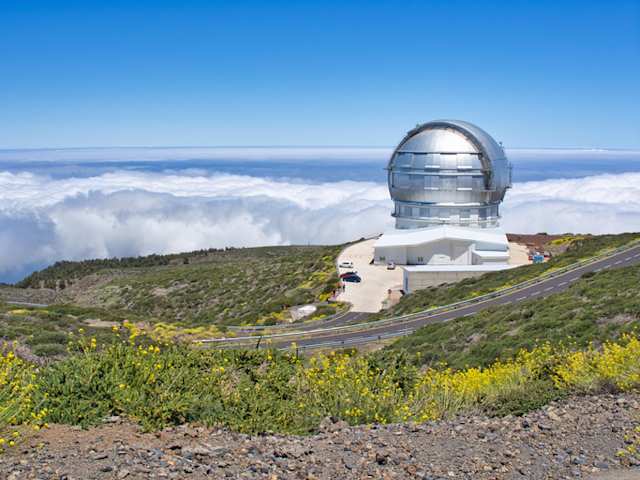
View of Roque de los Muchachos Observatory on top of a hill with waves crashing below, La Palma, Canary Islands
La Palma is one of the quieter, lesser-known parts of the Canary Islands. If you’re looking to get away from the crowds, this could be the answer. In the Caldera de Taburiente National Park you’ll find a massive volcanic crater home to unique flora and fauna, offering visitors opportunities for hiking, camping and stargazing. And speaking of stargazing, we highly recommend taking a tour of the Roque de los Muchachos Observatory. It’s one of the world’s leading astronomical observatories, located on the highest peak on the island and a really special experience that you can’t find anywhere else in the Canaries.
For oenophiles, how about a taste of La Palma wine? Take a tour through the island’s vineyards and wine cellars, sampling the many local wines and learning about the island’s rich winemaking culture and traditions.
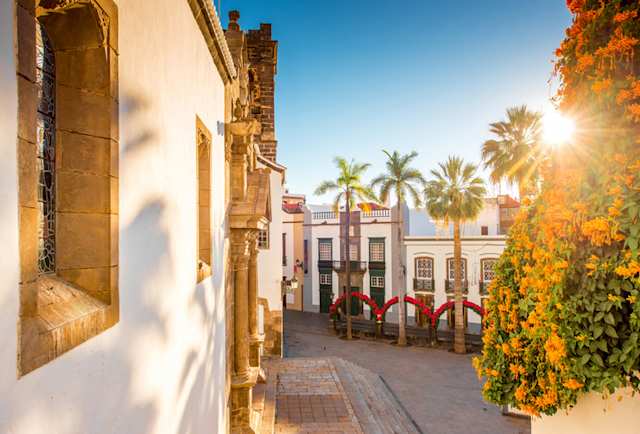
Central square and church at sunset in old town Santa Cruz de la Palma, Canary Islands
Santa Cruz de la Palma is the capital city of La Palma, well known for its charming historic centre, colourful houses and superb beaches. A little confusingly, Los Llanos de Aridane is actually the largest town on the island. Known for its traditional architecture and lively cultural scene, this area also makes for a great base for exploring the surrounding natural attractions.
La Gomera
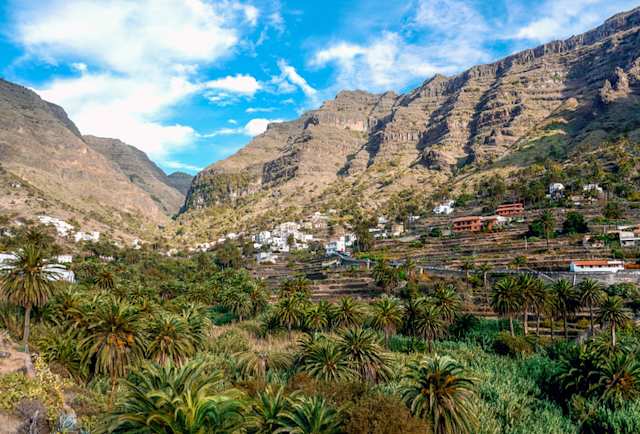
Houses surrounded by palm trees set into the hills and mountains in Valle Gran Rey, La Gomera, Canary Islands
Being the second smallest of the main Canaries, La Gomera is as you’d expect. This small, laid-back island is marked by craggy volcanic mountains crisscrossed with hiking trails and plenty of empty, untouched beaches. The Garajonay National Park is a UNESCO World Heritage Site and the island’s top attraction. With a staggering, ancient laurel forest and awe-inspiring views from the hiking trails, it’s a must-do. Meanwhile, Valle Gran Rey on the western side of the island is a breathtaking valley with immense cliffs, black-sand beaches and picturesque villages. It’s a great area for swimming, sunbathing and watersports.
Given the size of it, you could see La Gomera in a day tour if you really wanted to. However, Valle Gran Rey doubles up as one of the main areas for accommodation and is a great place to base yourself. The capital city San Sebastian de La Gomera is the main hub for transportation, as well as historic sites and cultural attractions. If you’re all about nature and hiking, we can recommend Hermigua, in the north of the island.
El Hierro
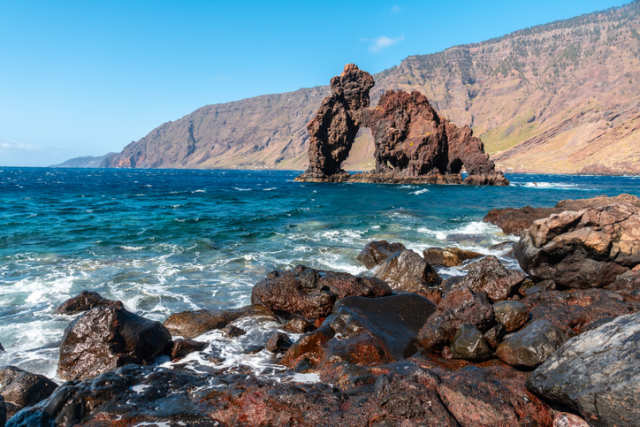
Volcanic stones jutting out of the sea at El Roque de la Bonanza, El Hierro, Canary Islands
Last but not least in our guide about where to stay in the Canary Islands is El Hierro. This is the smallest of the Canaries and the least populated. Because of this, it’s a paradise for lovers of nature and the great outdoors. The island is home to unspoiled and pristine natural beauty, rich marine life and a unique cultural heritage.
The El Hierro Biosphere Reserve is a UNESCO World Heritage Site covering more than half of the island’s surface. It's home to a wide range of flora and fauna, as well as unique geological formations. Highlights include Roque de Bonanza – a natural viewpoint located on the highest point of the island, serving up memorable views of the surrounding landscape and the ocean – as well as Playa del Verodal, a beautiful black-sand beach located on the western coast of the island, with crystal-clear waters and a peaceful atmosphere. If you fancy scuba diving, it’s not uncommon here to see whales, dolphins and sea turtles.
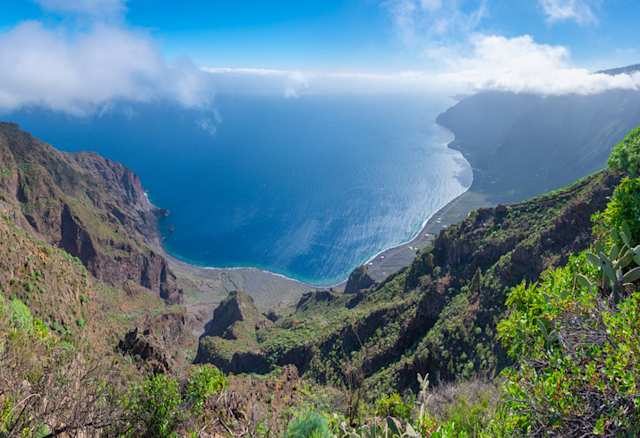
Aerial view of black-sand beaches and rocky cliffs of El Hierro, Canary Islands
Although remote, there are still a few options for where to stay in El Hierro. Valverde is the capital city of El Hierro and the main hub for transportation. It has a range of restaurants, shops and cultural attractions. Alternatively, on the west coast in a picture-perfect setting, Frontera is the second largest town.
